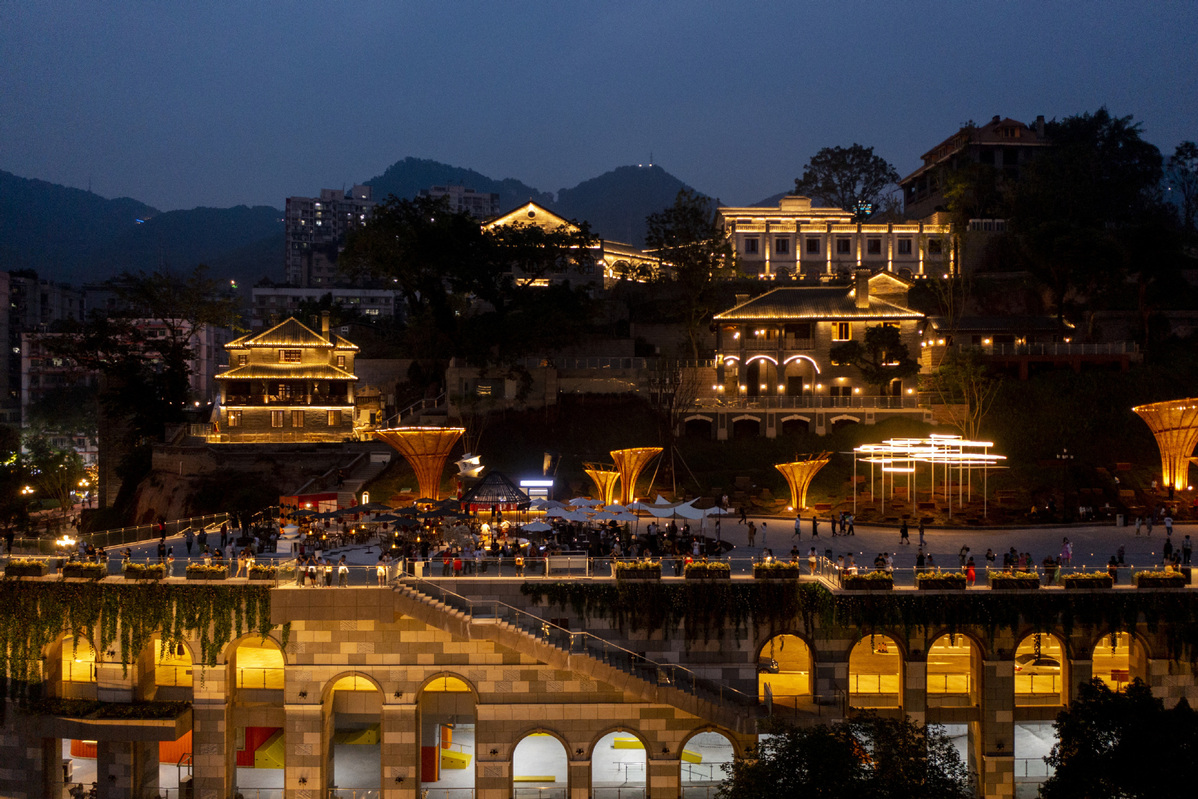West China's mountainous megacity pursues harmonious integration of tradition, modernity
Xinhua | Updated: 2023-06-15 10:52

After enjoying a bowl of spicy noodles for breakfast, Zhou Yingbi, a 67-year-old resident living on the Mountain City Alley of Southwest China's Chongqing municipality, opens her snack bar, awaiting the arrival of tourists from across the world.
Nestled along the rugged cliffs, the alley is one of the must-visit places in this culturally rich megacity. It is renowned for gathering various architectures from diverse times -- ancient city walls of the Ming Dynasty (1368-1644), foreign consulates and churches from the late Qing Dynasty (1644-1911), air-raid shelters during the Chinese People's War of Resistance Against Japanese Aggression, and schools and dwellings built after the founding of the People's Republic of China in 1949.
In 2018, the local government decided to renovate the historic alley in an effort to preserve its unique culture and history and transform it into a popular tourist spot simultaneously.
"We've attached significant importance to the protection of the historical heritage in the facelift program. We maintained the original style of the alley, encouraged the old residents to stay, and guided them to engage in tourism. Local residents like Zhou are the best people to introduce the alley's unique history to the growing number of visitors," said Huang Heng, who's in charge of the renovation and operation program of the alley.
"We also look to utilize some abandoned space to develop business, which has injected new vitality into the alley," said Huang, adding high-end hotels, homestays, creative bookstores, and restaurants were established to cater to the customers. The alley's captivating scenery has gone viral on social media and thus attracted a large influx of young people.
"Our memory of the past times will fade if these historical architectures are not preserved," said Zhou Yong, president of the association of Chongqing history, "Urban development should not mean totally forsaking the original appearance, but preserving the essence and fulfilling new functions of cities."

With its history spanning more than 3,000 years, many cultural relics, including old buildings and streets across the city, have breathed new life through renovation and upgrading in the new era.
Today, the city plays a crucial role in the development and opening up of the western region.
Chongqing is the transportation hub of the New International Land-Sea Trade Corridor. Launched in 2017, the corridor is a trade and logistics passage jointly built by western Chinese provinces and ASEAN member states. Covering 17 provinces and 61 cities in China, the corridor has expanded to 393 ports in 119 countries and regions.
Zhang Xingyan, general manager of the overseas business department of SERES Group, a carmaker based in Chongqing, highlighted the advantages of the corridor by saying, "Exporting cars to Indonesia now takes only 18 days through the corridor, compared to the previous 30 days by water."
In 2015, the China-Singapore (Chongqing) Demonstration Initiative on Strategic Connectivity was launched, focusing on financial services, air transportation, logistics, and information communication.
The initiative is the third intergovernmental cooperation project between China and Singapore, following the Suzhou Industrial Park in East China's Jiangsu province and the Tianjin Eco-city in North China's Tianjin municipality.
Launched in April 2016, the cross-border highway freight service with Chongqing as a domestic hub provides timely delivery of goods, promoting trade between western China and the Association of Southeast Asian Nations (ASEAN).
As of March 31 this year, 11 cross-border highway freight service routes had been launched, linking Chongqing with over 30 cities in Southeast Asia and parts of South and Central Asia.
"The collision and integration of indigenous culture and external thoughts have laid the foundation of Chongqing's development, while the city's openness and inclusiveness have further propelled its growth," said Pan Xun, a professor at Southwest University.
"Today, we've seen the city has opened wider its arms to embrace the world. Sitting at the crossroads of the Belt and Road and the Yangtze Economic Belt, Chongqing is poised to lead the opening up of the western hinterland," Pan added.
























